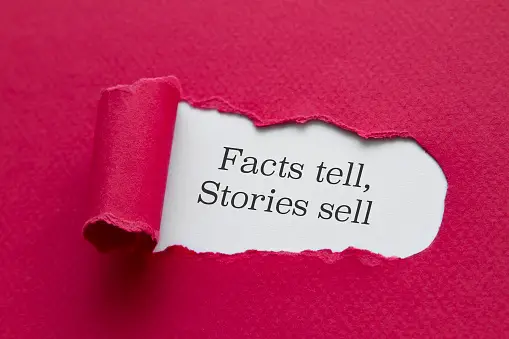This article will reveal to you how to write a Problem Statement in grant writing, why they are critical for the success of your proposal, how to begin writing, and examples and templates for Problem Statements.
The underlying problem or issue in your community that your grant proposal will solve is referred to as a problem statement for grants. The problem statement or needs assessment is another name for the statement of need.
Any good grant application will start with a pressing need and then a project plan to address it. It is critical to comprehend the specific requirement that motivates the grant proposal’s efforts. And it is the urgency and magnitude of this demand that will secure funding for the concept.
The Problem Statement is a clear statement of the circumstance, problem, or issue that your project is addressing or resolving. It explains the circumstances to the foundation or agency officials who will ultimately be in charge of awarding the funding.

Your grant proposal’s key motivator is the Problem Statement. It describes the issue at hand, its impact on the community, the benefits of solving it, and the consequences of not doing so.
The Problem Statement is frequently the beginning point for a grant submission. It’s helpful for the grant writer to comprehend the scope of the problem they’re trying to solve before laying out their plans. The Problem Statement sets the tone for the rest of the proposal.
What is the significance of a problem statement in a grant proposal?
Simply put, it explains why potential funders should be concerned about the issue. A good Problem Statement motivates benefactors to act as change agents. It motivates them to assume some responsibility for the betterment of others’ lives.
But first, funders must be persuaded that the problem is vital to address — and that the gift would assist in doing so.
The problem statement is essential for explaining to the funder the importance and urgency of the issue. It determines the scope and logic of your broader grant proposal. The reviewer should have a clear knowledge and acknowledgment of the fundamental problem, not simply its symptoms, by the completion of the Problem Statement.

Why are Problem Statements Crucial to the Success of Your Proposal?
If the underlying problem or issue is not addressed, it will result in critical failure in your community, according to your Problem Statement.
It is your responsibility as a grant writer to identify the problem and present conditions in your community that you intend to address in your grant application.
The grant problem statement informs reviewers on the breadth of the problem and aids them in determining the relevance and significance of your grant proposal. It’s also a great time to connect the importance of your grant proposal to the funder’s purpose and aims.
Your grant will be equally underwhelming if your grant application lacks a compelling, urgent necessity. Again, the concept will be funded because of the pressing need. The statement of need serves as the foundation for your grant request and explains why the project is necessary.
Furthermore, it allows you to demonstrate why your organization is the best choice to solve the pressing need.
Your application should highlight your organization’s strengths to meet the requirement and address the problem at every point throughout the proposal. Let’s look at what forms a good problem statement that will increase your chances of success.
What Characterizes a Good Problem Statement?
- Strongly worded description with a strong sense of urgency
A captivating Problem Statement should be written in the style of a human-interest story, giving the grant reviewer a behind-the-scenes look at a disaster and conveying both immediate tragedy and promise for the future.
2. Make the problem vivid and immediate by putting a face on the need.
Assume the reviewer has no prior knowledge of the project’s problem or circumstances.
3. Describe why this is a pressing issue, who else sees it as a problem, and what the different community stakeholder perspectives are.
4. Describe what will happen to the community or those who are served if the critical need is not met.
5. Stick to the facts and convey the necessity in rational terms rather than making emotional appeals.
You’ve discovered the Magic Solution. Your objective is to make the reviewer’s job easier by connecting all the dots and making it apparent and easy to see that you have the magic solution to solving the detailed urgent demand.
Depending on the funding opportunity, every application in the reviewer’s pile is likely to sound the same and use the same data—you need to stand out and grab their attention with clear and concise data, an urgent need, and a compelling solution that combines previous success with new innovative solutions.
6. Supporting Data that is Recent, Reliable, and Extensive
A good grant problem statement identifies the issue and provides evidence to back it up. When describing the necessity, it is critical to include precise and supporting statistics. This will demonstrate that someone other than you considers your need to be a serious issue.
7. Make sure to use comparative data while identifying data.
To put it another way, find data that allows you to make reasonable comparisons both within the neighbourhood and across the country. Determine your target population and double-check that all of your data is aimed at the same people.
To ensure recent and timely updates with negative trends, look for the most recent datasets that are available. When evaluating sources, consider data bias and reliability to ensure that you have quality information to support the urgent need you wish to address.
Federal and state agencies, demographic information, scholarly journals and articles, and industry publications are all good places to look for data. Take a look at the results of recent local surveys or needs assessments. Discuss public data sets with local colleges, institutions, and libraries.
8. Concentrate on information that compares, characterises, anticipates, or explains your pressing requirement. Consider both quantitative (mathematical statistics and facts) and qualitative data when looking for information. If you’re looking for high-quality data sources, start with Google Scholar.
9. The Problem’s Implications and Importance in the Larger Community
The implications and importance of the situation to the larger community are described in an effective Problem Statement.
10. Describe the financial impact on the community and society as a whole. Describe the problem’s history and current issues. Then, draw a line between where you are now and where you want to be. Make sure to list all of the issues that have hindered a long-term solution to this pressing need, and then explain why it must be handled right away. Finally, include what is being done right now.
11. Using the Problem Statement to Link Your Mission to the Funder’s Mission
An excellent Problem Statement connects your grant application to the mission of both you and the funder.
12. Describe why external financing is required to satisfy an immediate demand, fix a problem, or close a gap. Make sure you address the urgent need both locally and globally, and utilize statistics to demonstrate the problem at each level.
13. Don’t just assume that national concerns are a pressing local need; gather evidence to support your claim. Concentrate on articulating what can be completed within the given financing timeline, and then provide a concise outline of an action plan that focuses on attainable and quantifiable targets to address the defined need.
Don’t mix up your organization’ s needs with the urgent needs of your target community. The community of interest should be the focus of your grant application and statement of need.
Remember that the project will be financed if there is a pressing demand.
14. Demonstrate the urgency of the situation in your neighbourhood or region.
Finally, a successful Problem Statement identifies the flaws in the current system that allow for advancement.
Deductive reasoning can be used to show what hasn’t been covered in the literature or in the community — what has been overlooked.
Identify critical flaws in the current system that could be exploited to bring about long-term change.
Set the tone for your grant application by demonstrating how your proposed award can bridge the gap and satisfy an immediate need.
Avoid circular reasoning, when the absence of your solution is the problem, while stating the linked gaps. The absence of your recommended solution, according to circular thinking, is the actual problem.
What Makes a Good Problem Statement for a Grant Application?
The Problem Statement is a collection of facts and insights that appeals to both the intellect and the heart — in other words, it speaks to both the mind and the heart. An excellent Problem Statement strikes the right mix to create a compelling story.
The following components make up a compelling problem statement:
- Make use of facts
What is the existing issue that your grant seeks to alleviate? Give a detailed explanation. For example, your city may be experiencing a teen crime problem, and you believe that constructing a youth recreation facility will help alleviate the situation. Describe the present condition of the situation and the known information.
- Storytelling
Tell the stories of the people or groups who have been the most affected by the circumstance. What have they gone through as a result of this issue? On a personal and measurable level, how has it influenced them and their families? A few real-life examples help to illustrate the magnitude of the problem
- Data
Evidence is required by funders. They require real, comparable, and up-to-date data that demonstrates how the problem affects the community. They also require comparison evidence demonstrating how your solution will function or how similar solutions have performed in other places.
This information should be quantitative and quantitative in nature, with both concrete statistics and rational explanations. All of these aspects are organised in a clear, succinct, and logical manner by a well-written Problem Statement. It must be intelligible and realistic, as well as intriguing and engaging for the broad public. It cannot be overly ambitious or unprovable.
What Should a Grant Proposal Problem Statement Contain?
Here’s how to compose a statement of n and what it should incl
- Description of the issue
What is the scenario you want to improve? Describe the fundamental problem you’re concerned about. It might be anything from a deteriorating sidewalk to an increase in violent crime or a housing shortage in the area.
- Who is impacted by the issue or need?
Funders will want to know who is the most affected by this problem – who are they? What is their relationship to the situation, and how has it affected their lives? Identify the persons who have the most at stake in resolving the problem.
- Implications of the Issue
Describe what will occur if the issue is not remedied. What or who will be the hardest hit, and how will this affect the community? This point will very certainly require real-world, comparative facts to support your claim.
- Sense of Urgency
Why is it necessary to find a solution now? Why can’t it wait a minute longer? A excellent Problem Statement will explain why the project is important, but not in a melodramatic or overblown way.
- Possible Outcomes
What will happen if your proposal is accepted and the job is finished? What real benefits can be expected, and how will people’s lives be improved? This may be the most essential component in securing funding; it’s the outcome your donor hopes to see as a result of their donation.
- Examples from the Real World
The problem you’re trying to address may appear to be unique to your community, but chances are that other communities have confronted and solved comparable issues. Find anecdotal evidence that your idea has worked in the real world.
- Data and Statistics
Every aspect in this section should be backed up with hard facts wherever possible. It should be well-documented, described properly, and easily verifiable.
The missions of foundations and philanthropic organizations are paramount, but they are also businesses. Data and research are essential for all organizations to develop and survive. With this in mind, you’ll want to provide as much data as possible to back up your claim.
A problem statement must strike a delicate balance between emotions and logic. While you should make a compelling case on a human level, your efforts should be guided by logic. Don’t over-editorialize or sentimentalize the problem; instead, describe how your solution will work.
Conclusion
The problem Statement acts as the driving force behind your grant submission and the project it supports. You can utilize the example of a problem statement that has worked for other nonprofits to write your own appealing problem statement.
A good example of a problem statement may be found here.
Millions of persons with disabilities worldwide suffer physical, social, economic, cultural and legal barriers that limit their access to education, healthcare, including sexual and reproductive health, employment, care and protection systems and put them at a greater risk of living in poverty and make them more vulnerable to violence.
Women and girls with disabilities encounter persisting challenges due to discrimination, marginalization, social inclusion, stigmatization, and routine failure to ensure their social inclusion and effective participation in public life. They live in more stringent social hardship, compared to men with disabilities and women without disabilities. The COVID-19 pandemic’s outbreak has been further exacerbating their inclusion and marginalization, with several reports pointing to a disturbing increase of these violations of essential human rights.
The marginalization and endangerment of their rights, as well as the exposure to multiple forms of discrimination, has become a distressing reality.
It is well known that women have higher chances than men to live with disability. In fact 1 in 5 women worldwide live disabilities (19.2%) compared to 11% of men, and are at a higher risk of gender-based violence, sexual abuse and domestic violence.
According to diverse studies women with disabilities suffer from:
- Double discrimination
- low levels of education
- Limited access to employment
- Inadequate and insufficient access and offer of health services.
- Invisibility in decision-making processes.
One in five Americans lives with some kind of disability, and one in ten has a severe disability that limits one or more major life activities. Approximately 2.3 million U.S. mothers caring for children have a disability, and almost 10 percent of American Children are currently being cared for by a parent with a disability. Mothers with disabilities come from all works of life. They have the same wide range of parenting skills and personal strengths and weaknesses found in the broader community.
Disabled mothers are more likely to experience unwarranted investigation from social services agencies. They are more likely to have their parental rights terminated, and when children are removed these families receive fewer supports for reunification. As a result of this, many mothers with disabilities report living with a sense of fear that they will be scrutinized by medical authorities.
At times, when members of the public see a disabled woman out with her children and become concerned, they report the family to child protective services.
Mothers with disabilities are at particular risk, as cultural belief suggests that mothers rather than fathers are still primarily responsible for their children. Disability becomes even more daunting for families who have an open case with child protective services; a disability can be legal grounds for terminating of parental right. When child welfare agencies remove children from their homes, parents with disability have fewer opportunities to reunify their family. These agencies offer disabled parents few supports to ease the effect of structural barriers such as lack of access to transportation, higher rates of unemployment, poverty and diminished access to quality healthcare.
The Impact Foundation (IMF) proposed to empower 100 mothers living with disability on job assistance, Life skills, Parenting Skills, Financial Literacy and provides housing support. The job training will last for 3 months with the goal of obtaining part time employment within 3 months for these mothers and also supplemental coaching and guidance while the Life Skills will cover such topics as; decision-making, problem solving, goal setting, interpersonal skills, self-esteem, goal setting, creative thinking and others. These trainings will enable them build self-sufficiency, resiliency and economic independence.
Recommendation:
Check out these lists of best grant writing books that will help you learn how to write an award winning grant proposals.




